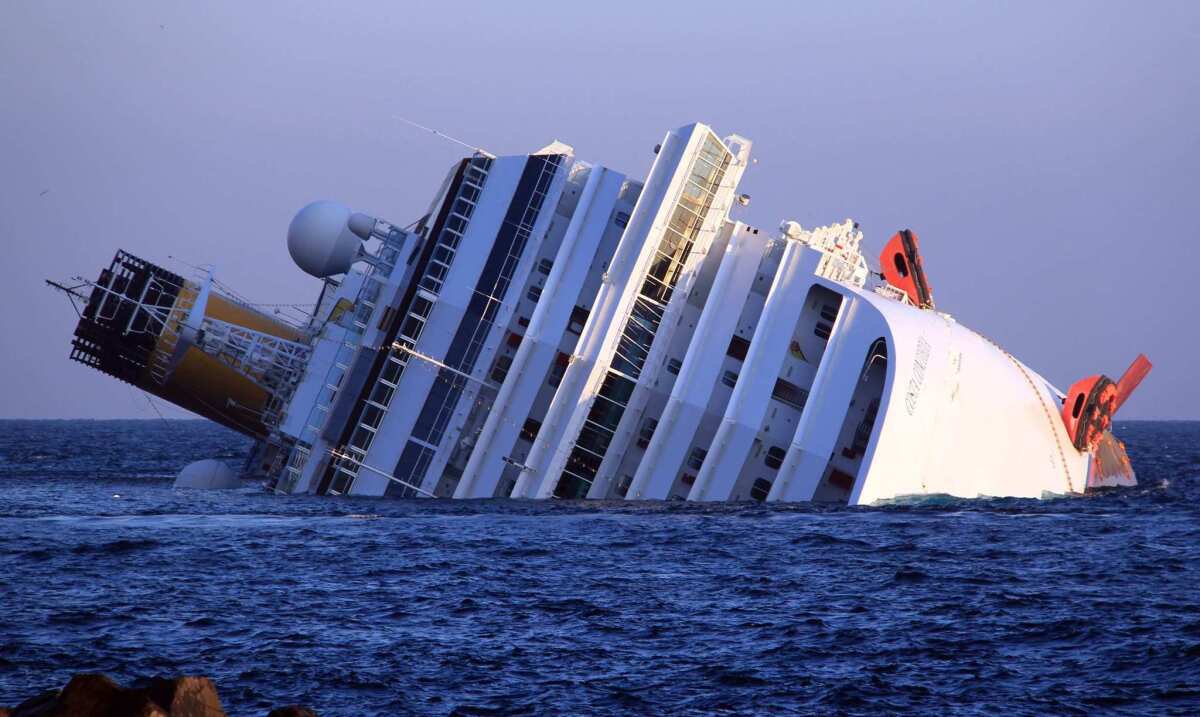Costa Concordia capsizing spotlights cruise ship safety

- Share via
It’s a cruise vacation, promising lots of fine dining and drinking, new adventures and relaxation. What could go wrong?
As the 4,200 people aboard the cruise ship Costa Concordia found, just about everything. The Jan. 13 capsizing of the Concordia off the coast of Italy, in which at least 11 people died, caught the world — including the cruise ship industry and its passengers — off guard and is shining a spotlight on cruise ship safety concerns.
Is it possible for today’s megaships — some hold as many as 6,000 passengers — to deal effectively with emergencies? And do passengers need more preparation so they can help themselves in time of crisis?
FOR THE RECORD:
Schettino: An earlier version of this post said that Schettino had been charged.
The answer, cruise industry experts said last week, is a qualified yes to both. The accident is a reminder of the importance of safety procedures and a wake-up call for the 16 million or so passengers who embark annually, some of whom may have become complacent about those nettlesome safety drills.
Concordia passengers with late seating were at dinner Friday when the Italian ship, carrying 3,200 passengers and 1,000 crew, hit the rocks. Mayhem followed, survivors said, with the captain accused of abandoning ship and passengers struggling to get in lifeboats and to understand announcements made in several languages. Darkness and the tilt of the ship added to the confusion.
How did it happen? Citing “significant human error,” Pier Luigi Foschi, chairman and chief executive of Costa Cruise, said Capt. Francesco Schettino might have wanted to pass closer than prudently possible to the island of Giglio, off the Tuscan coast, to show off the megaship, one of the largest in the Costa fleet. Schettino may face charges of manslaughter, causing a shipwreck and abandoning his ship.
The Concordia had held a lifeboat drill, in compliance with law, within 24 hours of embarking from Savona the previous Saturday on a seven-day Mediterranean round-trip cruise. But there had been no drill for the 600 passengers who boarded Jan. 13 at Civitavecchia, the port of Rome. (Muster drill instructions were available on TVs in the Concordia’s staterooms and on stateroom doors.).
Buck Banks, spokesman for Miami-based Carnival Corp., of which Costa is a subsidiary, said it was not known whether any of those 600 were among the victims.
The mandatory safety drill, in which passengers traditionally line up on deck in their life vests, is probably the least popular on-board activity, one that many passengers dismiss as regulatory nonsense. “I think it takes something like this to make people pay more attention,” Banks said.
On Monday, the International Maritime Organization, through its Secretary-General Koji Sekimizu, said the IMO needs to “seriously consider the lessons to be learnt [from the accident] and, if necessary, re-reexamine the requirements on the safety of large passenger ships.” The IMO, a United Nations agency, monitors standards set by the International Convention for the Safety of Life at Sea (SOLAS), which have been continually revised since being established in 1914 in response to the 1912 sinking of the Titanic. (Although ships of U.S. registry must comply with Coast Guard safety standards and pass annual inspection, the Italian-flagged Concordia is not under U.S. Coast Guard jurisdiction if not embarking passengers at U.S. ports.
Royal Caribbean, which owns Oasis of the Seas and Allure of the Seas, the largest cruise ships afloat, has streamlined the process for these 6,000-passenger ships. When I sailed on the Oasis in December 2009, the drill was a video in the ship’s theater, with no physical donning of vests. Attendance was checked by scanning of onboard identification cards, which hold muster station information. And life jackets were stored at muster stations, not in staterooms, so passengers had a better chance to get to those vests. This system is in effect on the Allure and the Oasis.
Even if all passengers are trained, is it reasonable to think 4,000 or 6,000 people can be easily evacuated?
“When you have 4,000 people, I think you’re looking for trouble — an accident waiting to happen,” said Francine Dumont, a travel agent at Plaza Travel in Encino who books mostly cruises. She cites crowd panic and, in the case of the Concordia, the confusion of announcements in multiple languages.
And, she added, smaller ships tend to attract seasoned passengers who take the drills seriously, rather than “drinking, chittering-chattering and taking pictures of themselves in their life jackets.”
Mark Murphy, a Philadelphia-based travel expert, editor in chief of Markmurphytravels.com and cruise veteran who has sailed on the 6,000-passenger Oasis, has no misgivings about the safety of cruise ships, including megaships. “The cruise industry has a tremendous safety record,” he said.
Carolyn Spencer Brown, editor in chief of CruiseCritic.com, cruising aboard the small Azamara Quest off China when reached by phone, faulted a “sloppy” safety procedure, not ship size, for the problem. “It was a perfect storm,” she said.
Cruising is “nothing to be scared of,” Spencer Brown said, but passengers “need to respect the muster drill. I’ve seen people drinking beer and talking like it’s a cocktail party. I think [the drill] is a pain in the butt, but I think it’s a necessary pain in the butt.” CruiseCritic.com’s followers tend to be veteran cruisers, Spencer Brown said, so she doubts they’ll be put off by the Concordia tragedy, but, she said, people who have never cruised may have second thoughts.
In an unscientific evaluation by SodaHead.com, an opinion-tracking website, 1,200 people were asked whether they would now be less likely to cruise. Of these, 25% said yes, 52% said no and 23% said they were not planning to cruise.
Murphy anticipates changes in international maritime law to require ships taking on passengers mid-cruise to have life drills before leaving port. And he expects passengers to listen at those drills.
Too often, Murphy said, passengers have taken a “just let me get on with my vacation” attitude at muster drills, reasoning that technology has improved in the century since the Titanic went down, taking 1,500 passengers and crew to their deaths. It has, but human error is timeless.
More to Read
Sign up for The Wild
We’ll help you find the best places to hike, bike and run, as well as the perfect silent spots for meditation and yoga.
You may occasionally receive promotional content from the Los Angeles Times.






